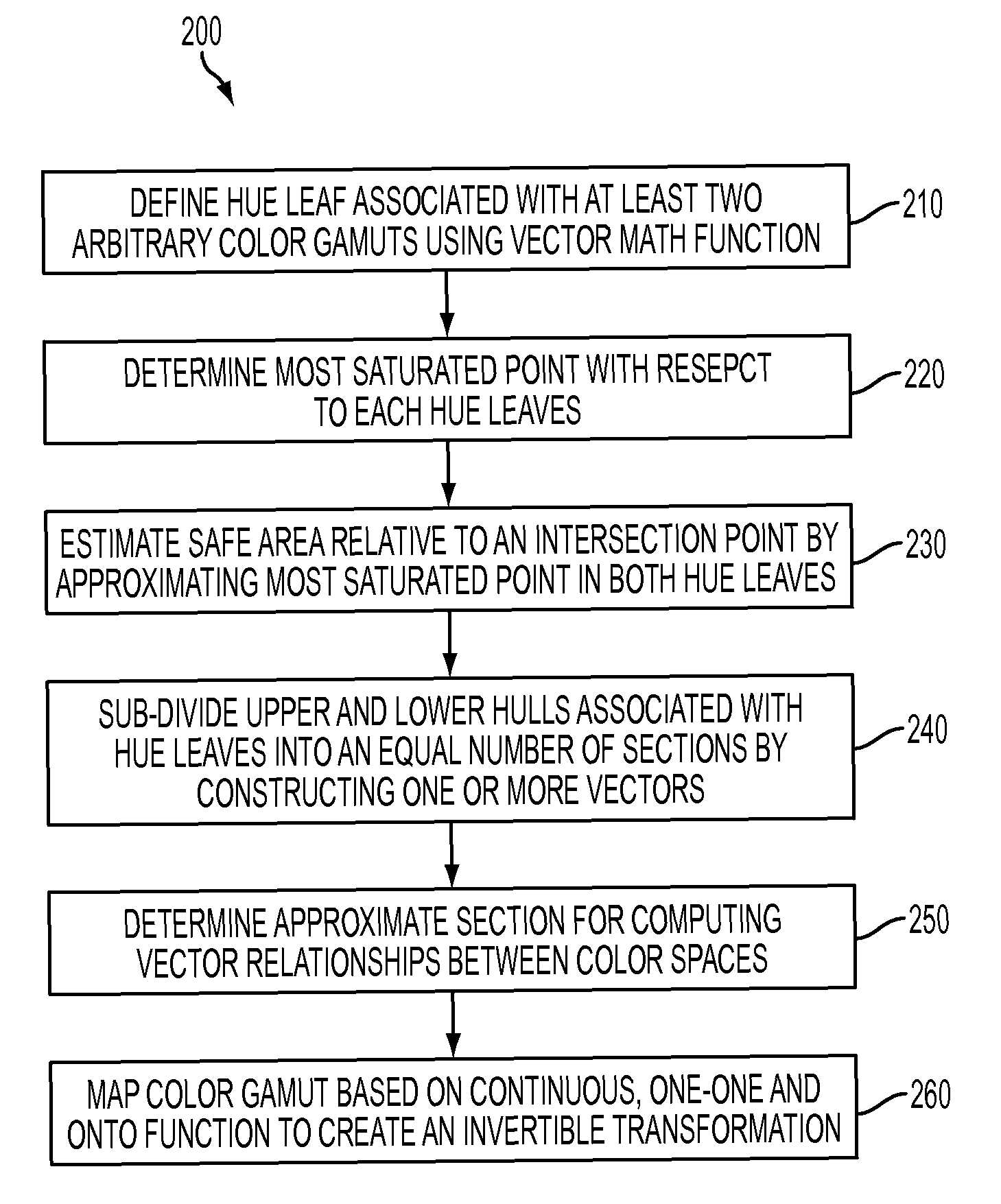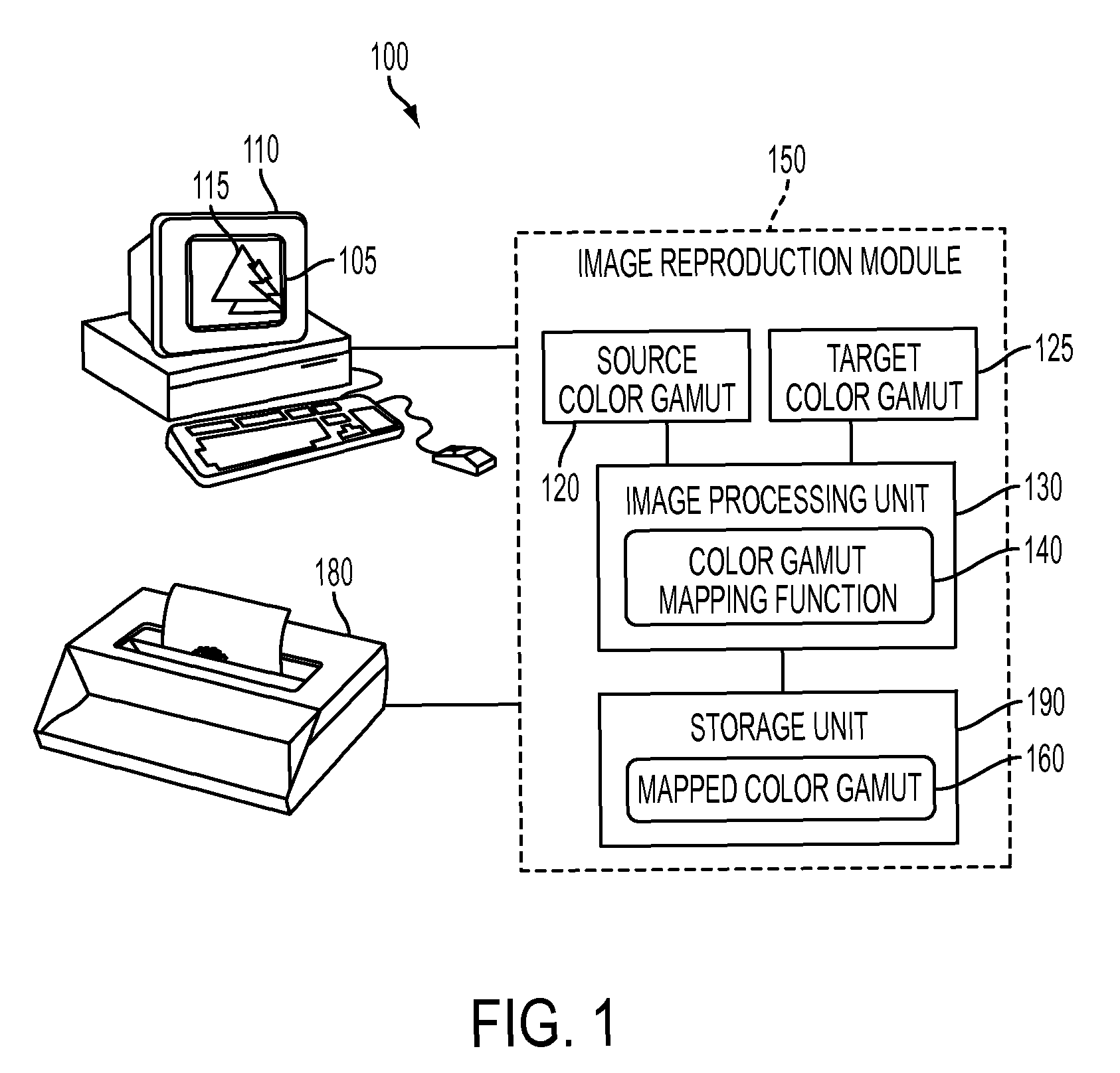Method and system for partitioning and mapping color gamuts based on one-one and onto mapping function
a color gamut and function technology, applied in the field of image processing systems and methods, can solve the problems of destroying the relationship between graphic data and images, destroying the saturation information of images rendered utilizing colorimetric mapping, and over-saturating the skin tones associated with images, etc., to achieve the effect of preserving hue, speeding up or slowing down saturation, and increasing saturation/lightness gain
- Summary
- Abstract
- Description
- Claims
- Application Information
AI Technical Summary
Benefits of technology
Problems solved by technology
Method used
Image
Examples
Embodiment Construction
[0022]The particular values and configurations discussed in these non-limiting examples can be varied and are cited merely to illustrate at least one embodiment and are not intended to limit the scope thereof.
[0023]FIG. 1 illustrates a block diagram of an image reproduction system 100, in accordance with the disclosed embodiments. The image reproduction system 100 can be employed to transform an input device-dependent color gamut to an output device dependent color gamut in such a way that the color reproduction characteristics of the saturated colors can be adjusted in a custom manner while maintaining the desired color appearance and tone reproduction on a neutral axis. The image reproduction system 100 can be configured in association with a source device 110 (e.g. a monitor) that includes a display 105 for displaying an image 115 and a target device 180 (e.g. a rendering device). The image reproduction system 100 can further includes an image reproduction module 150, and an imag...
PUM
 Login to View More
Login to View More Abstract
Description
Claims
Application Information
 Login to View More
Login to View More - R&D
- Intellectual Property
- Life Sciences
- Materials
- Tech Scout
- Unparalleled Data Quality
- Higher Quality Content
- 60% Fewer Hallucinations
Browse by: Latest US Patents, China's latest patents, Technical Efficacy Thesaurus, Application Domain, Technology Topic, Popular Technical Reports.
© 2025 PatSnap. All rights reserved.Legal|Privacy policy|Modern Slavery Act Transparency Statement|Sitemap|About US| Contact US: help@patsnap.com



